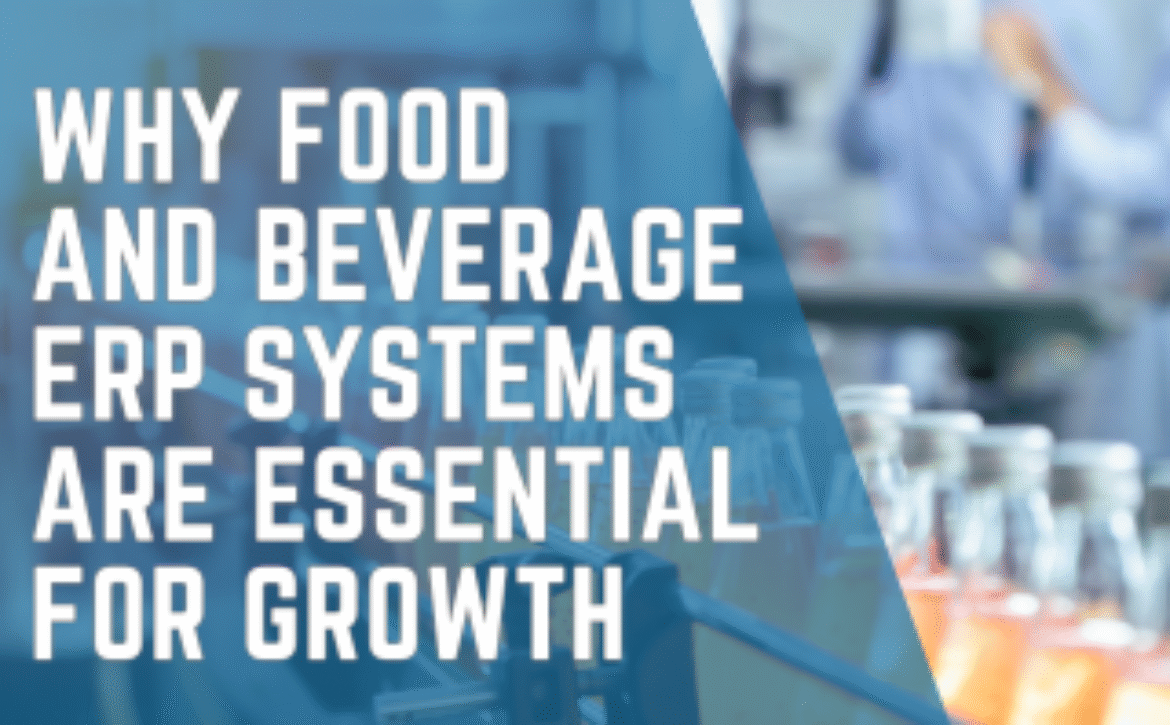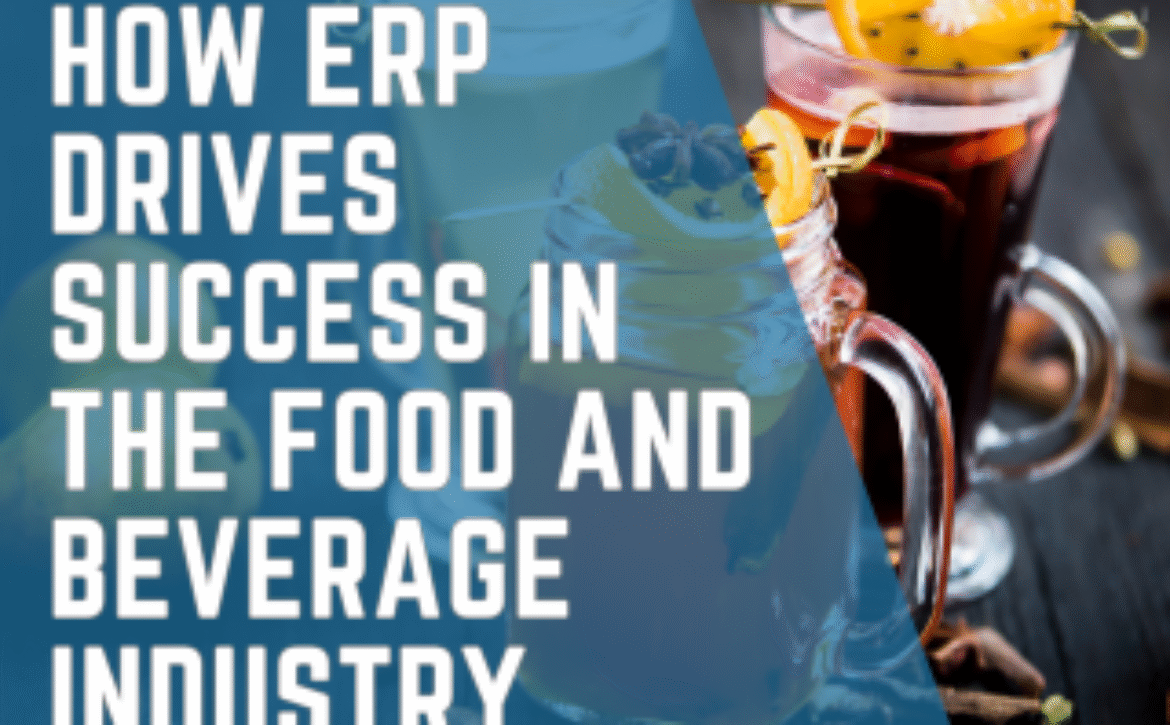Why Food and Beverage ERP Systems Are Essential for Growth
The food and beverage industry faces unique challenges that put constant pressure on profitability. Rising ingredient costs, unpredictable demand, tight margins, and rigorous safety regulations all create a complex operational landscape. To compete and grow, businesses must optimize every aspect of their operations. This is where food and beverage ERP systems come into play. ERP (Enterprise Resource Planning) software designed specifically for this sector offers powerful tools to streamline procurement, manage inventory efficiently, automate production processes, and deliver real-time financial insights. Among the leading solutions available, Sage X3 and Acumatica stand out for their ability to meet the complex needs of food and beverage companies, helping them reduce costs and improve operational efficiency.
Why Cost Control Is Vital in Food and Beverage Operations
Before diving into ERP solutions, it’s important to understand the specific cost pressures food and beverage businesses face:
- Fluctuating raw material prices: Seasonal changes, supply chain disruptions, and market volatility cause unpredictable ingredient costs that impact margins.
- Perishable inventory: Food products have limited shelf life, requiring precise inventory tracking to avoid spoilage and waste.
- Complex production processes: Managing multiple recipes, batch sizes, and strict quality control increases labor and overhead costs.
- Regulatory compliance: Adhering to standards like FDA, HACCP, and FSMA demands detailed record-keeping and audits, which consume time and resources.
- Distribution challenges: Selling through retail, wholesale, and e-commerce channels requires seamless coordination and cost control across multiple networks.
Inefficiencies in any of these areas can quickly erode profitability. To stay competitive, companies need comprehensive visibility and control, which traditional software or manual processes simply cannot provide.
How Food and Beverage ERP Systems Deliver Cost Efficiency
ERP systems built for food and beverage operations consolidate critical business functions on a single platform. This integration empowers businesses to reduce waste, optimize processes, and make faster, data-driven decisions. Here’s how Sage X3 and Acumatica address the industry’s cost challenges:
Streamlining Procurement and Supplier Management
Food and beverage companies often deal with numerous suppliers, fluctuating prices, and complex contracts. Manual procurement processes can lead to errors, delays, and overspending.
- Sage X3 centralizes procurement, automating purchase orders and aligning supply with production schedules and budgets. According to Sage, this helps reduce excess inventory and improves supplier negotiations.
- Acumatica enhances supplier collaboration with portals and real-time tracking, improving transparency and reducing order delays, as stated on the official Acumatica website.
By automating and optimizing procurement, both platforms help companies purchase smarter and reduce costs.
Optimizing Inventory to Minimize Waste
Tracking perishable inventory requires precision to prevent spoilage and ensure freshness.
- Sage X3 offers lot and serial number tracking combined with expiration alerts, helping companies monitor stock health and reduce waste. As per Sage, food businesses can expect up to a 20% reduction in waste through accurate inventory control.
- Acumatica provides real-time inventory visibility across multiple warehouses and sales channels, allowing businesses to balance stock levels and avoid costly overstocking or stockouts.
Effective inventory management reduces holding costs and safeguards product quality.
Improving Production Efficiency and Cost Control
Production in the food and beverage industry involves juggling recipes, batch sizes, labour scheduling, and equipment utilization.
- Sage X3 includes manufacturing modules that manage recipes, track production costs, and schedule resources efficiently to reduce downtime and overtime expenses. Sage emphasizes that its batch process manufacturing feature is specifically built for food and beverage complexity.
- Acumatica features dynamic scheduling, integrated quality control, and embedded workflows that ensure consistent output and lower labour costs.
Automated production planning boosts throughput while keeping costs under control.
Simplifying Regulatory Compliance
Maintaining compliance with food safety regulations is a resource-intensive necessity.
- Both Sage X3 and Acumatica integrate quality control processes directly into operations, providing traceability from raw materials through finished goods.
- Automated documentation and audit-ready reports reduce manual errors and the risk of regulatory penalties, according to both Sage and Acumatica official resources.
By embedding compliance into everyday processes, ERP reduces the administrative burden and protects brand reputation.
Delivering Real-Time Financial Insights
Financial visibility is crucial for controlling costs and making informed decisions.
- Sage X3 offers robust multi-currency accounting, budgeting, and reporting tools designed to track costs at granular levels across products and locations. Sage notes that its financial management capabilities include multi-entity support essential for growing businesses.
- Acumatica’s cloud-based platform provides real-time financial dashboards and forecasting to help executives identify cost overruns and optimize cash flow.
These insights enable faster reactions to market changes and help maximize profitability.
Why Sage X3 Is Better Suited Than Entry-Level Systems
Unlike basic accounting software or smaller ERP platforms, Sage X3 offers:
- Multi-entity financial management
- Complex recipe control for batch process manufacturing
- Global compliance capabilities
These features are critical for scaling food and beverage businesses and cannot be matched by entry-level solutions.
Cloud vs. On-Premises Flexibility
Both Sage X3 and Acumatica offer flexible deployment options — cloud-based, on-premises, or hybrid — allowing businesses to balance IT costs with control and security requirements. This flexibility supports different company structures and growth plans.
Integration with Finance and Supply Chain Tools
Both platforms are designed for seamless integration:
- Sage X3 connects with Sage Intacct, Salesforce, and other finance and CRM platforms.
- Acumatica offers open APIs and pre-built integrations for supply chain management and financial tools.
These integrations expand ERP capabilities and make implementation smoother across existing systems.
ROI Timelines and Total Cost of Ownership
Food and beverage businesses often see full ROI on Sage X3 and Acumatica within 12–24 months. This includes savings from:
- Reduced waste
- Lower labour costs
- Improved cash flow visibility
- Streamlined compliance and audit readiness
According to Sage and Acumatica sources, this timeline is typical for mid-size businesses.
How IWI Consulting Group Can Help Your Food and Beverage Business Succeed
At IWI Consulting Group, we specialize in delivering and tailoring ERP solutions for the food and beverage industry. Our deep expertise with Sage X3 and Acumatica ensures that your ERP system aligns perfectly with your operational needs and financial goals.
We offer:
- Personalized consultations to understand your unique challenges
- Seamless ERP implementation and integration services
- Training and ongoing support to maximize ROI
- Strategic advice to leverage ERP for competitive advantage
If you’re ready to cut costs, improve efficiency, and future-proof your food and beverage operations, contact IWI Consulting Group today. Let’s explore how the right ERP system can transform your business.

























